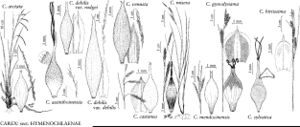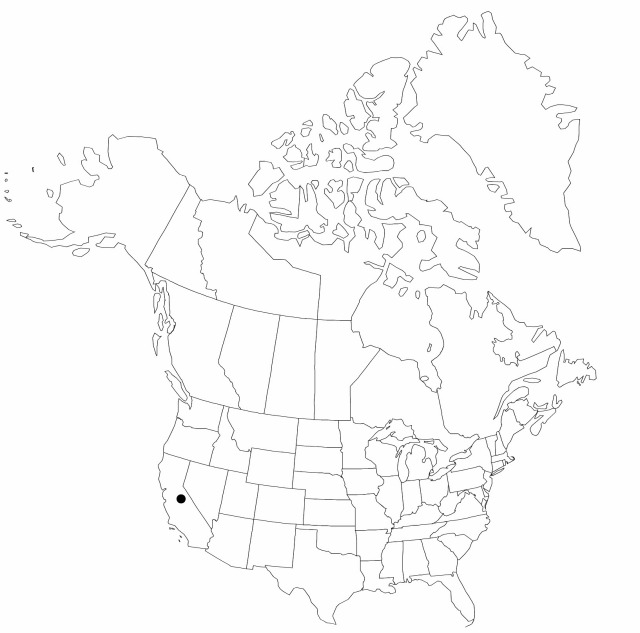Carex hirtissima
in S. Watson, Bot. California 2: 247. 1880.
Plants with short rhizomes, loosely cespitose forming small clumps. Culms reddish-brown to dark maroon at base; flowering-stems 30–60 cm, much longer than leaves at maturity, 1–1.3 mm thick, sparingly pubescent. Leaves: basal sheaths reddish-brown, bladeless, sparingly pubescent; others grading from maroon to green on back, brown-hyaline, often red dotted and pubescent on front, especially near apex; blades flat, 2.7–12 mm wide, usually pilose, more densely so adaxially, margins long-ciliate, except in rare glabrous form. Inflorescences: peduncles of lateral spikes 40–100 mm (proximal spikes) or less than 10 mm (distal spikes), pilose; peduncles of terminal spike to 25 mm, pilose or rarely glabrous; proximal bracts equaling inflorescence or more often shorter; sheaths 5–87 mm; blades 1–3 mm wide. Lateral spikes 2–4, 1 per node, well separated (proximal spikes) or crowded and overlapping staminate spike (distal spikes), erect, pistillate with 20–35 perigynia attached 1–1.5 mm apart, cylindric, 5–30 × 2–7 mm. Terminal spike staminate, rarely gynecandrous, sessile or more commonly pedunculate, 10–27 × 2.2–6 mm. Pistillate scales white-hyaline at base and along margins, suffused with reddish-brown near apex, with broad green midrib, broadly ovate, nearly as long as perigynia, apex truncate or rounded with ciliate green awn 1 mm, otherwise glabrous. Perigynia golden green, sometimes red dotted, 2-ribbed and finely 8–10-veined, substipitate, loosely enveloping achene, ellipsoid, 2.5–4.2 × 1–1.8 mm, membranous, apex tapering to beak, entire surface pubescent, often densely so, except in rare glabrous form; beak minutely bidentate, 0.8–1.4 mm, ciliate between apical teeth. Achenes sessile, 2–3.1 × 1–1.7 mm. 2n = 70, 72.
Phenology: Fruiting late spring–early summer.
Habitat: Seeps, wet meadows, springy slopes, open areas in Ponderosa pine forests, clearcuts and disturbed areas, mixed evergreen forests, often associated with serpentine
Elevation: 60–1200 m
Discussion
Carex hirtissima often forms large populations in clear-cut areas, especially near seeps or springs. A completely glabrous form has been collected from within a typical population in Butte County and should be sought elsewhere.
Selected References
None.
Lower Taxa
"shortened" is not a number."thick" is not a number.

